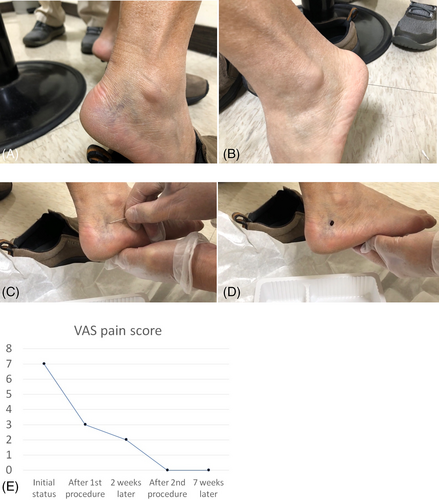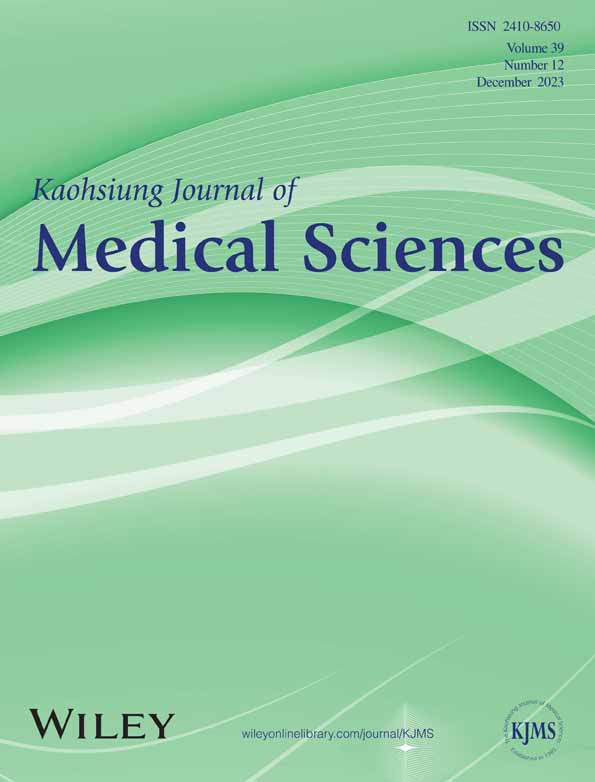Bloodletting acupuncture on venules between BL60 and BL61 rapidly relieving a 4-month episode of low back pain
Persistent pain after acute vertebral compression fracture is not uncommon. Klazen et al. observed patients with acute vertebral compression fracture where 37% still showed persistent pain after 6 months.1
The ACP recommends that “For patients with chronic low back pain, clinicians and patients should initially select non-pharmacological treatment with exercise, multidisciplinary rehabilitation, acupuncture and others.”2 Conventional acupuncture is usually non-bleeding, but in contrast, bloodletting acupuncture that targets venous vessels is not well-known at present.3
A 71-year-old woman with a history of L4 compression fracture without focal neurologic sign received medical treatment, including Denosumab, but still complained of a 4-month history of persistent right low back pain, which limited her exercise and housekeeping movements. The pain was characterized by contraction-like feeling and limitation of rotation, suggesting the existence of a secondary muscle strain accompanied by the primary L4 compression fracture. The visual analogue scale (VAS) pain score of her waist was 7/10 initially. She favored the treatment of bloodletting acupuncture over the conventional one due to a big difference on the venules between her right (Figure 1A) and left ankle areas (Figure 1B) being self-discovered.

After obtaining written consent, we performed bloodletting acupuncture using a sterile 22-gauge (0.40 × 32 mm) disposable stainless steel injection needle to puncture the patient's engorged venules around the posterior inferior side of the right lateral ankle (Figure 1C). According to the meridian theory, this area belongs to the bladder meridian and all the engorged venules are located between BL60 and BL61. In total, 10 blood drops were drawn out from the puncture site (Figure 1D).
Her pain decreased to VAS-pain 3/10 dramatically after the first procedure (Figure 1E). Two weeks later, the VAS-pain decreased to 2/10. Following this, she received the 2nd bloodletting acupuncture on the same place and VAS-pain decreased to 0/10. After 7 weeks, there was no relapse of low back pain. Moreover, she was able to perform housekeeping tasks and rotate her back smoothly.
The bloodletting acupuncture on the ankle venules posterior inferior area to relieve ipsilateral low back pain within minutes was quite remarkable. The potential mechanism could be related to a novel reflex connecting dilated venules around the ankle and ipsilateral back muscle, tentatively presumed as “vascular-muscular reflex,” which requires further investigation. However, the location of the engorged venules we targeted has been reviewed by Missori et al.,4 who described Ibn Masawaih (777–857 AD) was the first to report bloodletting from the sciatic vein (also known as saphena minor or ankle vein). Though our approach (pricking over venules) is somewhat different from ancient cutting on the vein, the anatomic site is similar and close to BL60 in meridian theory. BL60 has been reported to have analgesic effect on chronic low back pain.5 In brief, dealing with the venous vessels posterior inferior to the ankle is not only beneficial for sciatic pain but chronic low back pain as well.
ACKNOWLEDGMENTS
We thank our patient to encourage us to write this report.
CONFLICT OF INTEREST STATEMENT
All authors declare no conflict of interest.




